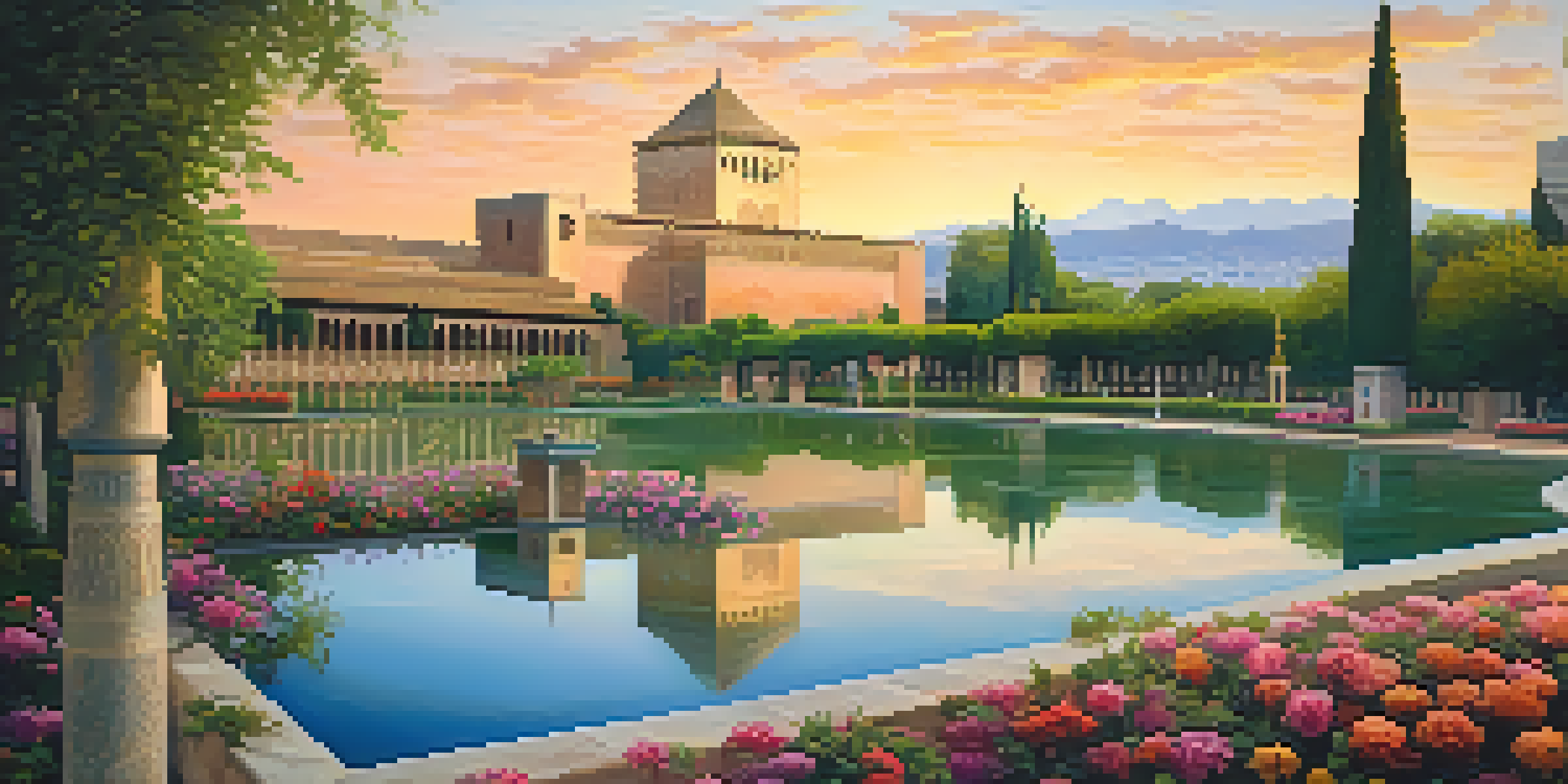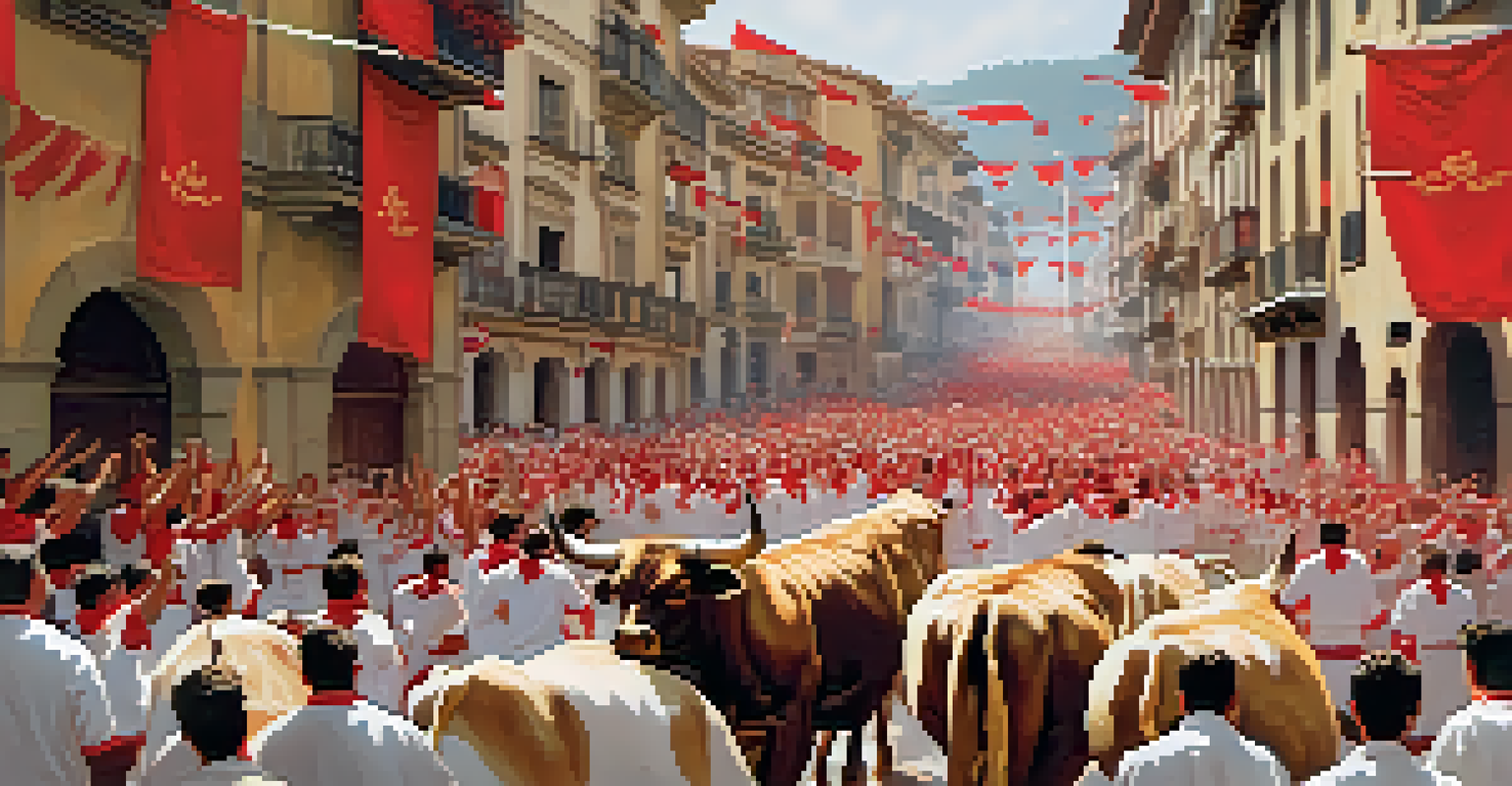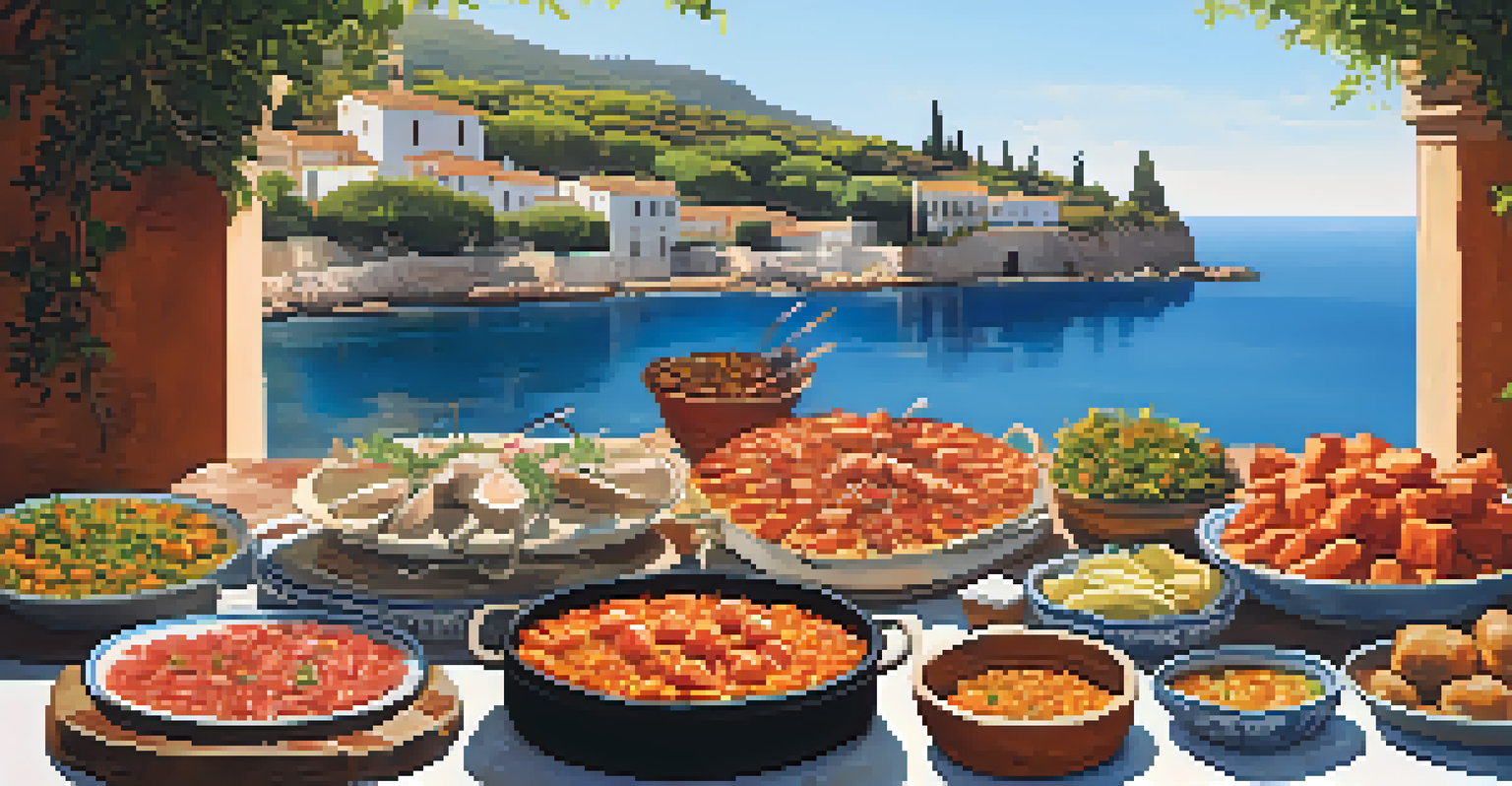Unveiling Spain’s Diverse Cultural Heritage Through Historical Tours

Spain's Cultural Tapestry: A Brief Overview
Spain is a vibrant country known for its rich history and cultural diversity. With influences from various civilizations, including the Romans, Moors, and Christians, each region offers a unique cultural experience. This blend creates a fascinating tapestry that is reflected in its architecture, cuisine, and traditions. Understanding this backdrop is essential as we embark on historical tours that reveal Spain's multifaceted heritage.
A nation’s greatness is measured by how it treats its weakest members.
From the flamenco rhythms of Andalusia to the Catalan modernism in Barcelona, Spain's cultural landscape is as varied as its geography. Each area has its own story, shaped by centuries of historical events and cultural exchanges. Historical tours serve as windows into these stories, allowing travelers to appreciate the nuances of Spanish culture deeply. By exploring these regions, visitors can connect with the heart and soul of the country.
As we delve into Spain's historical tours, we uncover not just monuments and artifacts but the vibrant lives of the people who shaped them. This exploration is more than just sightseeing; it’s about experiencing the cultural richness that defines Spain today. So, let’s set the stage for an unforgettable journey through Spain’s historical heart.
The Moorish Influence in Andalusia
Andalusia, often considered the cradle of Moorish culture in Spain, offers stunning examples of this influence. The Alhambra in Granada is a prime example, showcasing intricate Islamic architecture alongside beautiful gardens. As you walk through its halls, it’s easy to feel the echoes of a time when Moorish rulers left their mark on the region. This historical tour immerses visitors in a world where art and architecture tell stories of a rich past.

In addition to the Alhambra, cities like Córdoba and Seville are filled with historical treasures. The Mezquita in Córdoba, with its mesmerizing arches and columns, reflects the architectural genius of the Moors. Meanwhile, Seville’s Alcázar, a UNESCO World Heritage site, is another testament to the beautiful fusion of Islamic and Christian styles. Such sites not only highlight architectural splendor but also the cultural exchanges that occurred through centuries.
Spain's Rich Cultural Heritage
Spain's diverse culture is shaped by historical influences from the Romans, Moors, and Christians, evident in its architecture, traditions, and culinary practices.
Exploring Andalusia’s Moorish heritage through guided tours allows visitors to appreciate the region's historical significance. Local guides often share captivating stories, revealing how these influences shaped contemporary Andalusian culture. This journey through history invites you to experience the romance and mystery of a time that still resonates today.
The Impact of the Roman Empire on Spain
Spain was once a significant part of the Roman Empire, and its influence is still visible in numerous historical sites across the country. Cities like Tarragona and Mérida boast well-preserved Roman ruins, including amphitheaters, aqueducts, and temples. These remnants offer a glimpse into the daily life and architectural prowess of the Romans. Walking through these sites, visitors can almost hear the echoes of ancient spectators cheering in grand arenas.
Food is our common ground, a universal experience.
One of the most remarkable Roman sites is the city of Pompeii, which provides an extraordinary context for understanding Roman urban life. However, Spain’s own ruins hold stories of their own, showcasing how Roman culture blended with local traditions. Guided tours often highlight these fascinating aspects, making the experience both educational and entertaining.
Exploring Spain’s Roman heritage allows travelers to connect with a pivotal era in the country’s history. It’s a chance to appreciate the foundations of modern Spanish culture, language, and infrastructure. Each stone tells a story, and each tour reveals the profound impact of the Roman Empire on the Spanish landscape.
The Christian Reconquista and Its Legacy
The Reconquista, the centuries-long struggle to reclaim the Iberian Peninsula from Muslim rule, had a significant impact on Spain's cultural heritage. This period saw the construction of grand cathedrals, palaces, and fortresses, showcasing the triumph of Christian kingdoms. Notably, the Cathedral of Santiago de Compostela stands as a testament to this legacy, drawing pilgrims from around the world even today. Historical tours often include these magnificent sites, allowing visitors to appreciate their artistic and religious significance.
In cities like Toledo, the fusion of Christian, Muslim, and Jewish influences can be seen in the architecture and cultural practices. The coexistence of these cultures produced a unique atmosphere that still resonates in the city’s winding streets and historical landmarks. Guided tours can help illuminate this rich tapestry, revealing how the Reconquista shaped not only the physical landscape but also the societal fabric of Spain.
Exploring Historical Tours
Guided tours provide immersive experiences that connect visitors with Spain's multifaceted history, from Moorish architecture to the legacy of the Reconquista.
Understanding the Reconquista is essential for grasping the complexities of Spain’s identity. Through historical tours, visitors gain insight into how this tumultuous period forged a nation united in its diversity. It’s a journey that reflects resilience, cultural exchange, and the enduring spirit of the Spanish people.
Art and Architecture: The Golden Age
Spain's Golden Age, spanning the 16th and 17th centuries, was a time of extraordinary artistic and architectural achievement. The works of renowned artists like Velázquez and El Greco continue to influence the art world. Museums such as the Prado in Madrid house masterpieces that showcase the brilliance of this period. Historical tours often embrace these artistic endeavors, providing visitors with a deeper understanding of Spain’s cultural evolution.
In addition to painting, architecture flourished during the Golden Age, with grand structures like the Plaza Mayor in Madrid and the Baroque churches of Salamanca. These sites reflect the wealth and ambition of the Spanish Empire at its zenith. Walking through these architectural marvels, travelers can admire the intricate details and grandeur that characterize this era.
Experiencing the Golden Age through guided tours enriches the travel experience, allowing visitors to appreciate not only the beauty of the art but also the historical context behind it. It’s an invitation to step into a world where creativity thrived and left a lasting legacy on Spain’s cultural landscape.
Regional Festivals: A Celebration of Tradition
Spain is known for its lively regional festivals, each reflecting the unique cultural identity of its people. Events like La Tomatina in Buñol and the Running of the Bulls in Pamplona draw visitors from all over the globe. These festivals are not just entertainment; they are deeply rooted in historical traditions and local customs. Participating in or simply witnessing these celebrations offers a vibrant glimpse into Spain’s diverse cultural heritage.
Many historical tours incorporate visits to these festivals, allowing travelers to experience the energy and passion that define Spanish culture. From the colorful parades to traditional music and dance, these events bring communities together and celebrate their shared history. The stories behind each festival often reveal fascinating insights into the region's past, making the experience even more enriching.
Vibrant Regional Festivals
Regional festivals in Spain not only celebrate local customs but also offer insights into the country's rich cultural tapestry and shared history.
Engaging in these cultural festivities creates lasting memories and connections with the local people. It’s a chance to immerse oneself in the spirit of Spain, where history and tradition come alive in joyous celebration. These experiences highlight the importance of cultural preservation and the joy of sharing traditions through generations.
Culinary Heritage: A Taste of History
Spain’s culinary heritage is as diverse as its cultural history, with each region offering distinct flavors and dishes. From the tapas of Andalusia to the paella of Valencia, food is a reflection of local traditions and historical influences. Culinary tours often showcase this rich gastronomic landscape, inviting travelers to savor the tastes that have shaped Spanish culture over centuries. Every bite tells a story of historical exchanges and regional pride.
The fusion of ingredients and cooking techniques is a testament to Spain's diverse heritage. For example, the introduction of spices from the Moors transformed Spanish cuisine, leading to the delightful paella we know today. Participating in cooking classes or food tours allows visitors to learn about these influences firsthand, making the culinary journey both delicious and educational.

Exploring Spain's culinary heritage through historical tours not only satisfies the palate but also deepens the appreciation for the culture. It’s about savoring history and understanding how the past has flavored the present. Ultimately, food becomes a bridge connecting travelers to the heart of Spanish life.